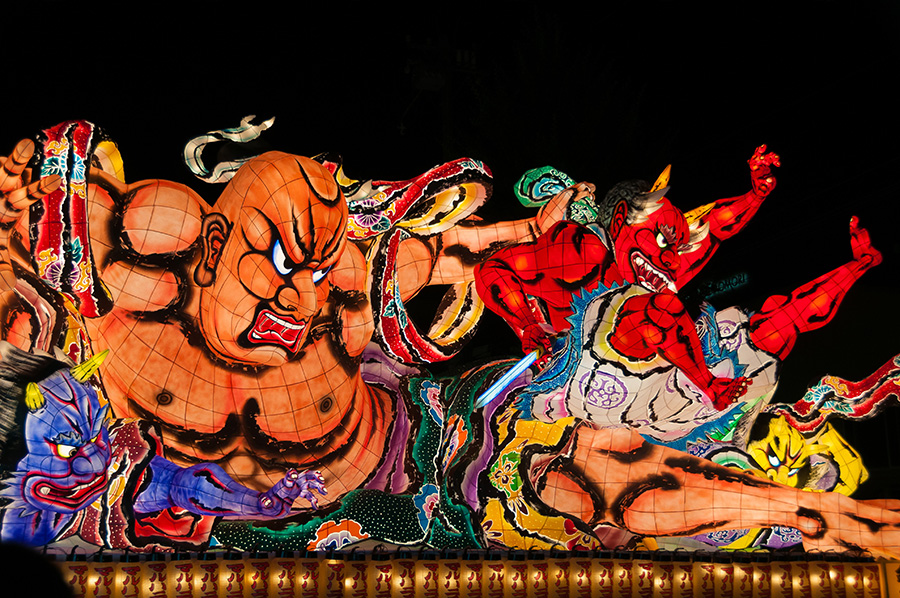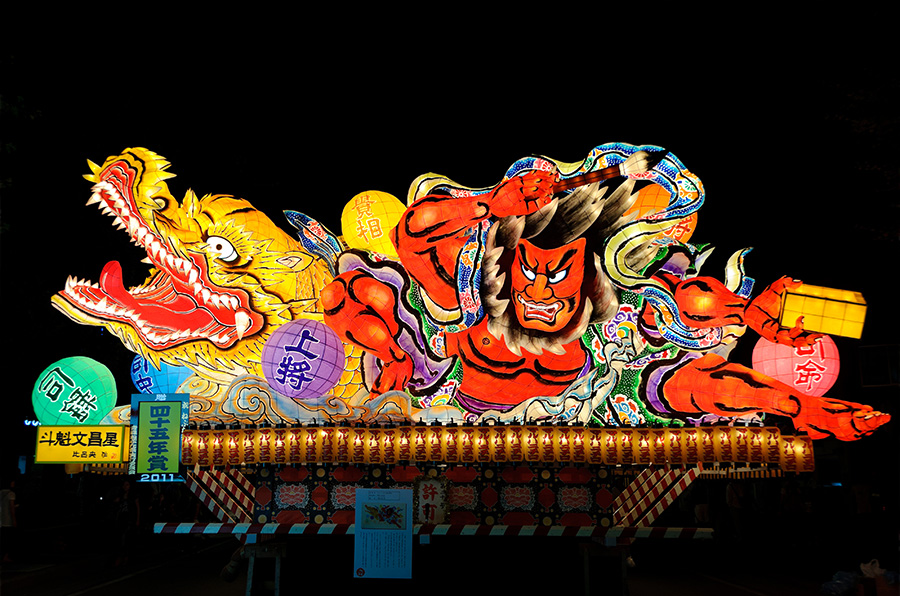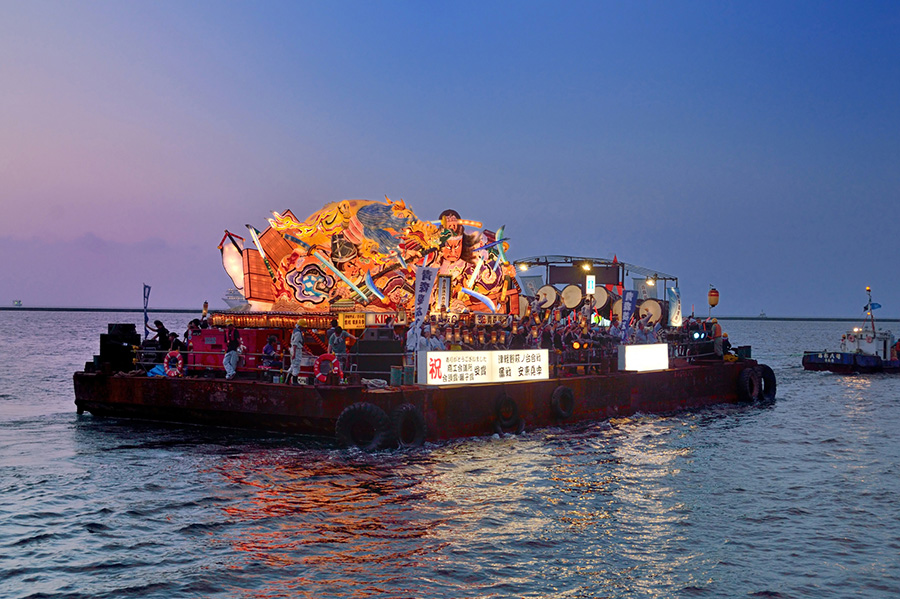
Kids Web Japan
Calendar
Nebuta Festival (in Aomori)

The Nebuta Festival takes place from August 2 to 7 in the city of Aomori, which is located at the northern tip of Japan's main island, Honshu. It used to be part of the Tanabata Festival, which was traditionally held on the seventh day of the seventh month on the old Japanese calendar. That date roughly corresponds to August 7 on the calendar that's used today.

The Nebuta Festival features a parade of huge lanterns in the shape of figures from Japanese folktales told from ancient times. The lanterns are made with wooden or bamboo frames and covered with brightly colored paper mache. Some have eyes that look like they're glaring right at you! And there are even some that are painted by kids.
The lanterns are illuminated as dusk approaches, and they become a spectacular sight as darkness deepens.
Sizes vary, from small lanterns carried by children to those measuring as high as 5 meters (16 feet) and as wide as 9 meters (30 feet). These lanterns are placed on floats that are pulled by anywhere from 4 to 50 people. Around each float are hundreds of male and female dancers called haneto, who parade around town to the accompaniment of flutes and drums chanting "Rasse-rah, rasse-rah." Anyone - including kids - can join the fun as a haneto by renting a costume from a local shop.

The festival in Aomori usually features around 20 floats. They begin parading along about 3.1-kilometer (about 1.9 mile) course around 7:00 in the evening and finish up around 9 p.m. The peak comes on August 4 through 7, when the largest number of floats are out.
On the final day -August 7 - the floats begin their procession in the afternoon. Later that the evening, six floats judged to be the best are taken to the sea and placed on ships for a cruise around the port of Aomori.
Nebuta means drowsiness. It's thought that the festival began as a way of waking people up for the fall harvest season coming up. There are Nebuta Festivals in various places in the Tohoku region, although the one in Aomori is the most famous. Every year, over 2.5 million visitors come to the city for the festival. A number of Nebuta floats have been shown abroad, and the festival is probably one of the best known in Japan.
